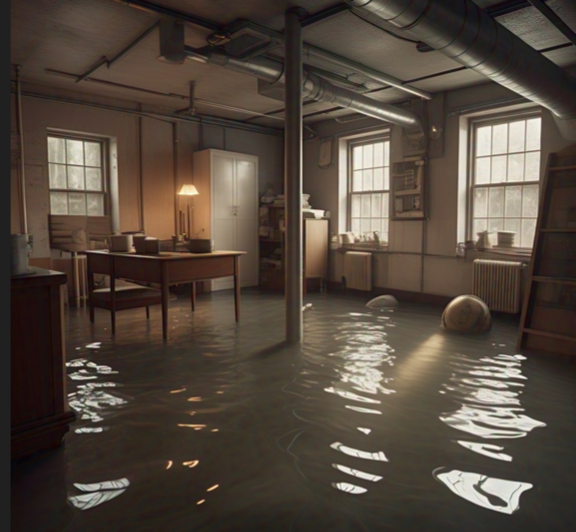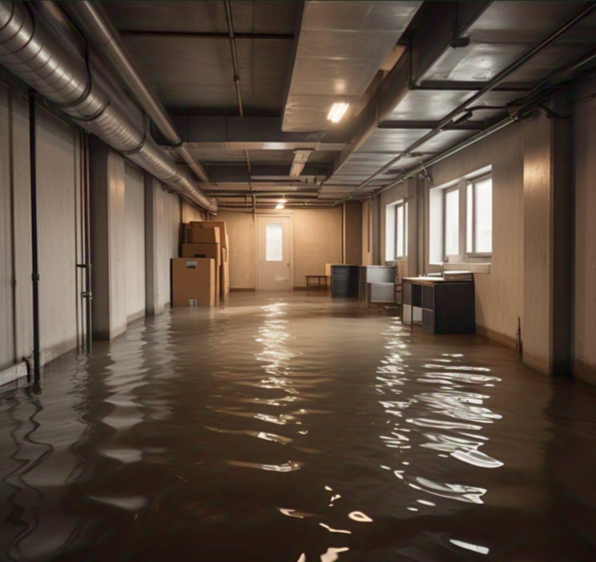When most people think of hurricanes, they imagine coastlines battered beaches, high winds, and storm surges. But what happens when the hurricane’s core weakens and its remnants push inland? In states like Indiana and Ohio, far from the Atlantic or Gulf coasts, residents are often caught off guard by the floods that follow. The truth is, hurricane remnants can be just as dangerous to inland areas, especially when it comes to flash floods.

A Flash Flood Night of Devastation in Fortville, Indiana
It was a quiet September evening in Fortville. Sarah Thompson, a mother of two, had just finished dinner and tucked in her children. She’d seen weather alerts earlier, warning of heavy rain from the remnants of Hurricane Isla, now downgraded to a tropical depression. “Just rain,” she thought.
But by 11 p.m., rain had turned into a torrential downpour. Within 30 minutes, water began seeping into the basement. By midnight, the backyard resembled a lake. Storm drains overflowed, the sump pump failed, and Sarah’s family was forced to evacuate through chest-high water. The local creek had jumped its banks, and the entire street was submerged.
What was left behind was devastating: soaked furniture, ruined floors, and months of cleanup. Sarah, like many in her community, never imagined a hurricane could impact inland Indiana.
Understanding Hurricane Remnants
A hurricane loses strength when it moves inland, often downgraded to a tropical storm or tropical depression. But even weakened systems still carry:
- Immense amounts of moisture
- Heavy rainfall potential
- Lingering wind gusts
These elements can lead to flash flooding when they encounter the Midwest’s already saturated soils or overwhelmed drainage systems.
Why Are Indiana and Ohio at Risk?
Though landlocked, Indiana and Ohio lie in the path of post-tropical weather systems. The terrain, combined with urban development, makes flash flooding more likely due to:
- Impervious surfaces like asphalt and concrete
- Aging stormwater infrastructure
- Low-lying valleys and creek beds
Hurricane remnants can linger over these areas, dumping 3–6 inches of rain in just a few hours.

Key Flash Flood Risks from Hurricane Remnants
- Sudden, Intense Rainfall: Often underestimated, the rainfall from tropical remnants can fall faster than the ground can absorb.
- Backed-Up Storm Drains: Leaves and debris clogging drains can turn streets into rivers in minutes.
- River and Creek Overflow: Smaller waterways rise quickly, often breaching their banks without warning.
- Soil Saturation: If it rained days before the storm, already-wet soil leads to immediate runoff.
How to Protect Your Property
1. Install a Sump Pump (with Backup Power) A reliable sump pump can save your basement. Add a battery backup in case of power outages.
2. Grade Your Yard Away from Your Home Ensure water flows away, not toward your foundation.
3. Clean Gutters and Drains Before Storm Season Prevention is cheaper than water restoration.
4. Keep Emergency Kits Ready Include important documents, flashlights, and a portable phone charger.
5. Stay Updated with NOAA and Local Alerts Use apps and text alert systems for real-time flood warnings.
Recovery: What to Do After a Flash Flood

- Document All Damage Immediately
- Contact Your Insurance Provider
- Call a Professional Restoration Company like PuroClean to assess water damage and mold risks
- Avoid Using Electrical Systems until cleared by professionals
For immediate assistance with Water damage restoration, contact PuroClean Disaster Restoration of West Fort Wayne, Call (+1) 317-467-4436.
PuroClean Disaster Restoration has over 19 years of experience in the water damage restoration industry, with over 100 5 Star reviews on Google serving Indianapolis. Click on this link to see it’s online reviews and ratings.
FAQs on Hurricane and Flash Floods
Q1: Can hurricanes really cause flooding in Ohio or Indiana?
Absolutely. While hurricanes weaken after landfall, their remnants carry enough moisture to cause serious flooding in inland states like Ohio and Indiana.
Q2: What’s the difference between flash floods and regular floods?
Flash floods happen suddenly and with little warning, often caused by intense rainfall overwhelming drainage systems. Regular floods are usually slower, allowing more time for evacuation.
Q3: How much rain from hurricane remnants can cause flooding?
It varies, but as little as 2–3 inches in an hour can overwhelm urban drainage, especially if the ground is already saturated.
Q4: How can I know if my home is in a flood-risk zone?
Use FEMA’s Flood Map Service or consult local emergency management offices. However, even homes outside flood zones can flood due to flash events.
Q5: What should I do immediately after a flood?
- Stay safe; don’t return until authorities declare it safe.
- Take photos/videos of damage for insurance.
- Contact a restoration service like PuroClean to begin water removal and mold remediation.
- Don’t use electrical outlets or appliances until they’ve been checked.
Q6: Will home insurance cover hurricane-related flooding?
Most home insurance does not cover flooding. You’ll need separate flood insurance through FEMA’s National Flood Insurance Program (NFIP) or a private provider.
Q7: Is there a seasonal time to worry about hurricane remnants?
Yes hurricane season runs June to November, with September and October posing high risks for Midwest flood events.
Q8: What are signs of mold after flooding?
- Musty odor
- Discoloration on walls or ceilings
- Respiratory symptoms like coughing or sneezing
Q9: How fast does mold grow after flooding?
Mold can start growing within 24–48 hours of water exposure. The sooner you start drying, the better.
Q10: Can I DIY water cleanup after a flood?
Small spills can be DIYed, but large-scale water intrusion or sewage backup requires professionals. Improper drying leads to long-term structural and health issues.
Conclusion: Be Hurricane-Ready, Even Inland
Hurricane remnants don’t just disappear. They travel, and when they collide with the Midwest’s infrastructure, they can unleash destructive floods in places that feel far removed from the coast. If you live in Indiana or Ohio, don’t underestimate the power of post-hurricane weather.
Preparation is key. Equip your home, understand your risks, and have a plan in place. And if disaster strikes, know that professional help like PuroClean Disaster Restoration of West Fort Wayne is just a call away to help you recover, rebuild, and restore your peace of mind.
